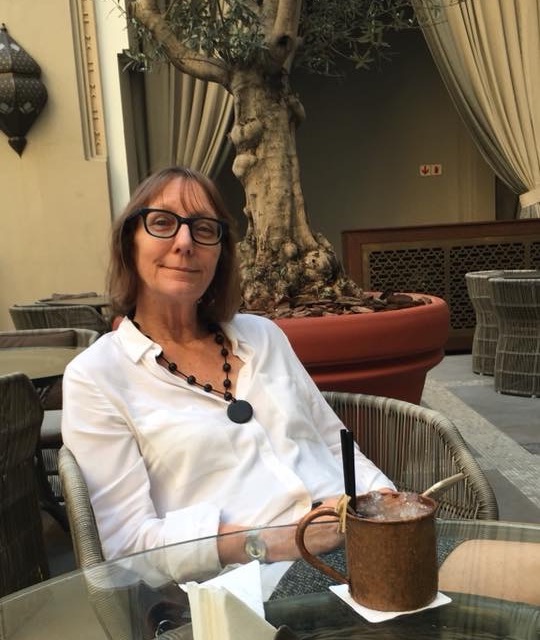News - Advertising
In-house agencies on the rise
by Iain Akerman
February 15, 2019
.jpg) Advertisement
AdvertisementAccording to the Association of National Advertisers in the US, 80 per cent of its members now have some form of in-house agency. Five years ago that figure stood at 58 per cent.
In-house agencies are on the rise, providing everything from strategy and creative to media planning and buying and the management of marketing tech. What’s more, 90 per cent of respondents to the ANA report said the workload of their in-house agencies had increased in the past year, with that workload likely to rise further. All, potentially, at the expense of traditional agencies.
“This report makes clear that the work being done by in-house agencies is no longer confined to ‘low-hanging fruit’ such as collateral/promotional materials and internal videos,” said Bob Liodice, chief executive of ANA. “Traditional agencies are becoming increasingly challenged as marketers move more work in-house while encouraging their external agencies to provide differentiated services and increased value.”
If they’re not concerned, perhaps agencies should be. After all, Liodice expects the current trend to continue, with accelerated client movement towards in-house agencies. What’s more, the dangers for traditional communications networks are obvious and contagious, beginning with reduced revenue and the potential for considerable loss of talent.
For clients, the benefits are calculable, and hinge on taking control of critical areas such as budgets, productivity, data, confidentiality of information, and the findings from proprietary research, says George Kotsolios, managing director of Leidar Dubai, an international advocacy, branding and communication consultancy.
“In-house agency models give clients the ability to better control the cost of their marketing campaigns and the assurance that budgets are spent for the right reason in a transparent fashion and not for big third-party agencies’ entertainment purposes and shareholder dividends,” says Kotsolios. “Also, a company is able to better utilise its procurement resources once it is no longer involved in the RFP and selection process for a myriad agencies with different specialisations required to deliver campaigns across channels and platforms. And in terms of productivity, an agile in-house agency model can be better managed and be fully accountable for KPIs, as opposed to having to manage the silos within integrated external agencies or a number of agencies for different channels, which add complexity and slow down decisions as well as implementation.”

“In-house agency models give clients the ability to better control the cost of their marketing campaigns and the assurance that budgets are spent for the right reason in a transparent fashion and not for big third-party agencies’ entertainment purposes and shareholder dividends.”--George Kotsolios, managing director of Leidar Dubai
Kotsolios has spent much of his career client side, including a spell at Al-Futtaim’s now defunct in-house marketing communications agency GMASCO. As such, he sees both sides of the picture.
“Pure in-house solutions have two key advantages: total focus, commitment, expertise and dedication to one client’s product or service on the one hand, and speed to market on the other,” says Kotsolios. “However, these advantages can be countered by fatigue, repetition, and ultimately boredom that could potentially lead to low retention of in-house talent.”
Regionally it’s impossible to ascertain how many clients are taking their communications needs in-house, but there are examples we can reference. For example, Asad Rehman, Unilever’s director of media and digital transformation for the Middle East and North Africa, has stated previously in this magazine that “given the accelerated rate of change externally, and the need for consolidation across disciplines, we are actively bringing in-house some of the core expertise such as on data, CRM, management of marketing tech etc”.
“The objective of this approach is to help drive cohesive output across our marketing disciplines and to look at what is being called the creation of ‘holistic consumer experiences’,” said Rehman. “Bringing the expertise in-house implies the creation of cross-functional teams of digital experts who are co-located. Their focus in not on driving ‘functional excellence’, but on bringing their skill-based contributions to the team with an output driven approach. This forms the core part of our digital transformation.”
All of which sounds fairly ominous for agencies. Should they be concerned? Jackie Hughes, chief strategy officer at Impact BBDO, doesn’t seem to think so.
“There is no danger to an agency such as ours as we are evolving, changing, flexing, testing,” says Hughes. “The only danger to an agency is if they do not embrace change. The fact is, this is actually growing the depth of marketing activities and engagement – even more work and creativity if you like.
“Businesses need to live and die on data, but the role agencies play is still important – more important than ever before. We ask the more intuitive questions, looking behind the what (the data) to the why (what drives people emotionally/rationally), the how (creating ideas and assets that drive all actions – salience/engagement), and monitoring the action and result.
“Agencies are in the business of moving people to engage with brands. Data helps us to ensure the action and transaction. It is a fabulous partnership. Whilst people remain 99.99 per cent emotionally driven, you need agencies to create compelling authentic conversations with people, especially given all the clutter and curation out there.”
Kotsolios isn’t so sure. He points the way towards a more hybrid future, such as that adopted by Spark44, which was set up as a joint venture between advertising executives and Jaguar Land Rover in 2011.
What is clear is that if agencies are to survive they must be transparent with clients regarding resource allocation and stop selling what is best for profit margins. Similarly, in-house agencies will only thrive if they are sufficiently funded and communications departments have a key role to play in the formulation of business strategy and decision making.

“There is no danger to an agency such as ours as we are evolving, changing, flexing, testing. The only danger to an agency is if they do not embrace change.”--Jackie Hughes, chief strategy officer at Impact BBDO
So, is the trend towards in-house agencies likely to continue?
“Of course, especially with the advent of artificial intelligence,” says Hughes. “But I think people will become less trusting of what is curated and delivered, which will make our role even more important. Individually we already have IP locators and proxies where our behaviour and media usage is tracked and nudged (especially in open data markets like the US). At BBDO we have our own data analytics companies and media companies. We even have [an] omni-engagement platform that links to all our category data, media usage and KPIs that we use for strategy, communications planning and real-time content analysis. As long as the people in an agency love creativity and change, the journey is a real thrill.”—



.jpg)





.jpg)




